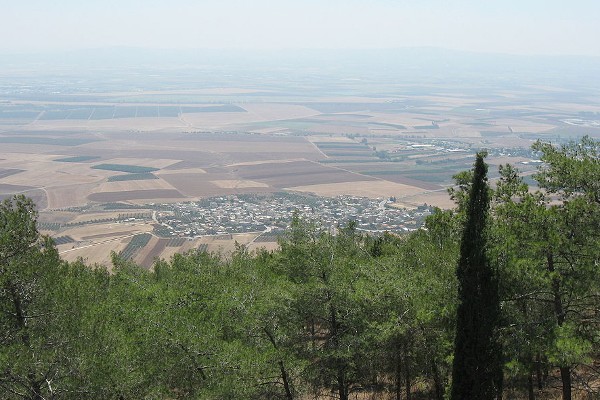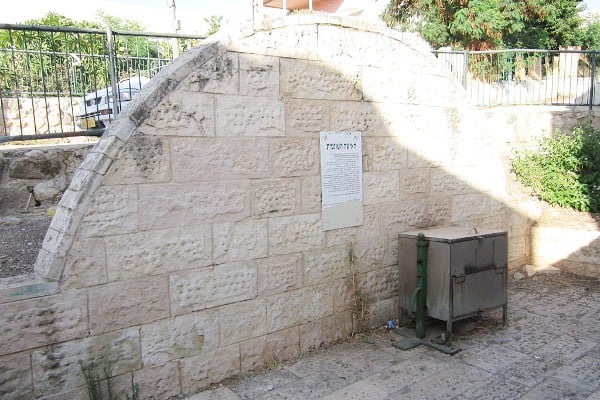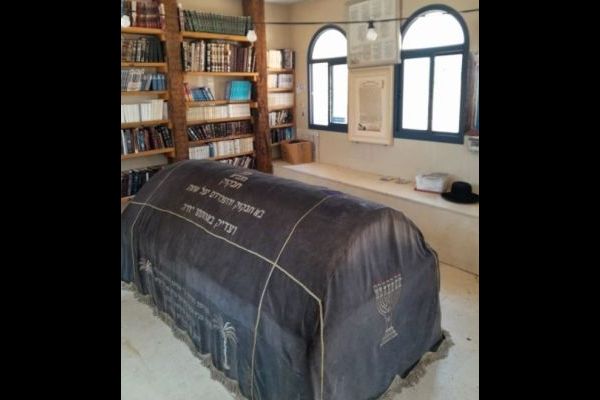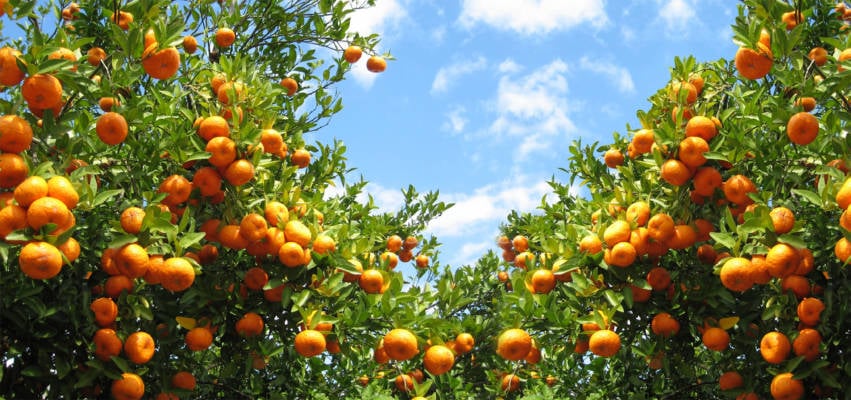
This biblical site near Afula is an opportune place to pray for children.
By Nosson Shulman, Licensed Tour Guide
“Elisha went as far as Shunam, and there was a prominent woman who prevailed upon him to eat a meal…whenever he would pass, he would stop there to eat a meal. She said to her husband, “Behold… a holy man of God, who passes by us regularly. Let us make a small walled upper chamber, and place there for him a bed, a table, a chair, and a lamp; and it will be that when he comes to us, he will turn into there.” (2 Kings 4: 8-10)
Today, we will be visiting a holy site where miracles occur regularly even today! This site is so off the beaten track, that most tour guides and Israeli geographical experts are not aware of it and there is very little information found online. With that being said, let’s explore this wonderous location together!
The “House of the Shunamite Woman” is located in today’s northern Arab-Israeli village of Sulam.
The town (historically called Shunam) has a long history, going back to the Canaanite times. It is mentioned in ancient Egyptian documents as one of the towns overtaken by Pharaoh Thutmose III (circa 1450 BCE) when he conquered Canaan. He successfully took over Israel, and the Egyptians ruled the land for several centuries (he allowed the 31 Canaanite city-state kings to retain their rulership, so long as they pledged loyalty to their Egyptian overlords).
The town is mentioned several times in the Bible. When the Philistines waged war against King Saul at Mt. Gilboa, they encamped at Shunam (see 1 Samuel 28: 4). The Philistines were victorious in this battle and King Saul was slain.
In King David’s final years, he had a beautiful female companion named Abishag who came from Shunam (see 1 Kings 1:3).
Elisha and the Shunamite Woman
Shunam’s predominant story occurred during the days of Elisha the Prophet, a student of Elijah (see 2 Kings 4). He would travel through the land teaching people and encouraging them to repent.
On these journeys he would often pass by Shunam, which was close to an important crossroads junction (the nearby city of Afula is still a major crossroads junction). In the town lived a wealthy, pious woman who was married but childless for many years. Whenever Elisha passed through the town, they would invite him for a meal.
One day she told her husband that since Elisha was a man of G-d, they should set up a place for him in the house where he could sleep while in the area. According to Jewish sources, her husband actually built a very strong stone structure so that Elisha would have maximum privacy.
The next time the prophet was in town, he took her up on her offer to stay over (according to Jewish sources, it was Rosh Hashana, the Jewish new year). As Elisha lay down to sleep, he told his attendant Gehazi (who usually traveled with him) to ask the woman if there was anything he could do for her in order to show his gratitude for her kind hospitality.
Being a pious woman, she asked for nothing, implying that she was content with everything G-d had already given her (she wasn’t hosting Elisha for any ulterior motives or to receive a reward). Elisha still wanted to reward her and asked Gehazi if he had any ideas on what he thought she could use. As the couple were an older, childless couple (according to Jewish sources, she was past childbearing age), Gehazi suggested a blessing for them to have a child.
The prophet then called in the woman and told her she would have a child within a year (according to Jewish sources, that child was none other than the future Prophet Habakkuk whose prophesies were recorded in the Bible).
The child grew, and one day was helping his father in the fields when he complained of head pains. He was brought home and died in his mother’s lap.
She brought her son to the room she had built for the prophet and laid his lifeless body on the bed. She then saddled her donkey to head off to Mount Carmel to find Elisha. (For more on this Biblical mountain, click here.)
When the Shunamite woman arrived at Mount Carmel and saw Elisha, she ran to him and grasped his legs and told him about her son, saying that she would not leave unless Elisha came with her.
When they arrived back at her house in Shunam, the prophet went to his room and saw the body. He shut the door behind him, prayed to G-d and went on top of the boy, “Placing his mouth upon his mouth, his eyes upon his eyes, and his palms upon his palms (2 Kings 4:33)”. He then got up and paced back in forth, deep in heavy prayer. He then laid on top of him again and suddenly the boy sneezed seven times and opened his eyes!
The prophet then summoned the Shunamite Woman, who was overjoyed to see that her son was miraculously alive again!
In 2 Kings 8, the Bible relates another story involving the Shunamite Woman. Elisha (who was staying at her house) warned that a seven-year famine was coming to Israel. As result, she went to the land of the Philistines.
When she returned to Shunam, she found she had been robbed of her property and her house occupied by strangers. She went to the King to ask for the return of her property. When she arrived to the palace, the King was in conversation with Gehazi (Elisha’s attendant) about the miracle Elisha performed for her (according to Jewish sources, it was divine providence that this discussion was taking place the moment she arrived).
The King asked her to verify the story, after which he ordered that everything be returned to her (including payment for the crops the squatters had illegally grown on her property for seven years).

The fields surrounding Sulam, the site of biblical Shunem. In the fields, the woman’s son became ill and subsequently passed away in his mother’s home. (Wikimedia Commons)
An Opportune Place to Pray for Children
Today, all that exists of the house is a wall marking the spot where the entrance once stood.
Although little information exists about this site online and few have even heard of it, it was well known to the late Rabbi Chaim Kanievsky, one of the leading Torah sages of our generation. His father, the Steipler Gaon (a major Torah sage of the previous generation), had told him that due to the miracles that took place here, the site was still very much infused with holiness and was an opportune place to pray for children.
Subsequently, Rabbi Kanievsky led a delegation of childless couples (all of whom doctors had said there was no hope for them to have children) to the site for intense prayers. Within a short time, almost all of the women who were there became pregnant. Since then, the rabbi encouraged all childless couples to make the effort to pray at this amazing site.
As well, a yeshiva (academy of advanced Torah and Talmudic studies) was established nearby.
If you are looking for something off the beaten track on your next trip to Israel, I highly recommend you visit here!
Nosson Shulman is a journalist and Licensed Tour Guide in Israel specializing in Biblical tours. To allow tourists to experience Israel during the Corona era, he created the new hit Israel tour video series, which brings Israel to the home of viewers by simulating actual tours. To check out his free sneak preview tour videos, click here. To view sample tour itineraries or to inquire about private tour opportunities with a personalized itinerary on your next trip to Israel, click here.
MAKE THE LAND OF ISRAEL EVEN MORE BEAUTIFUL!
PLANT YOUR VERY OWN FRUIT TREES IN ISRAEL!
Farmers near the Gaza border lost family, friends and workers. Spring is here, and they desperately need help to replant the farms. Join us in blessing the People and Land of Israel.
“I will ordain My blessing for you…” (Leviticus 25:4)




